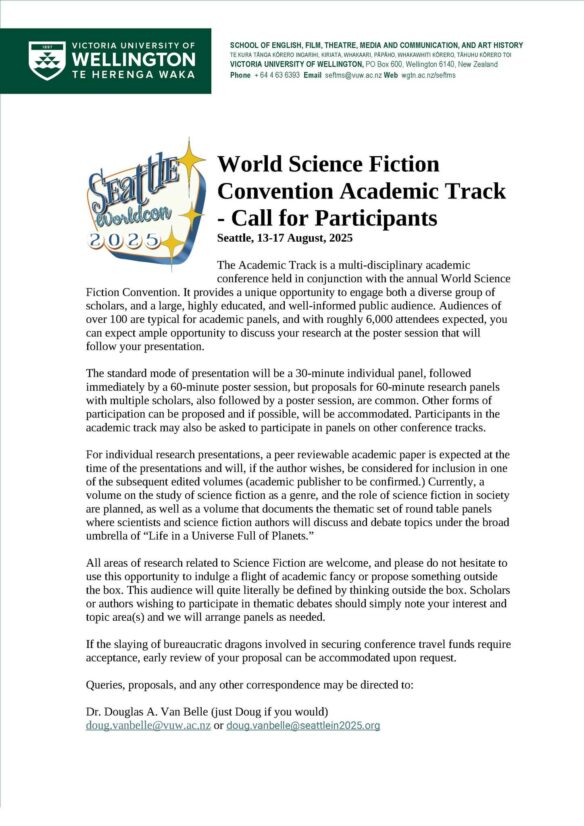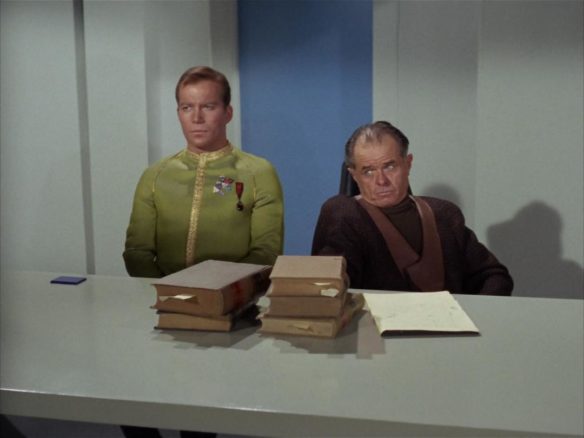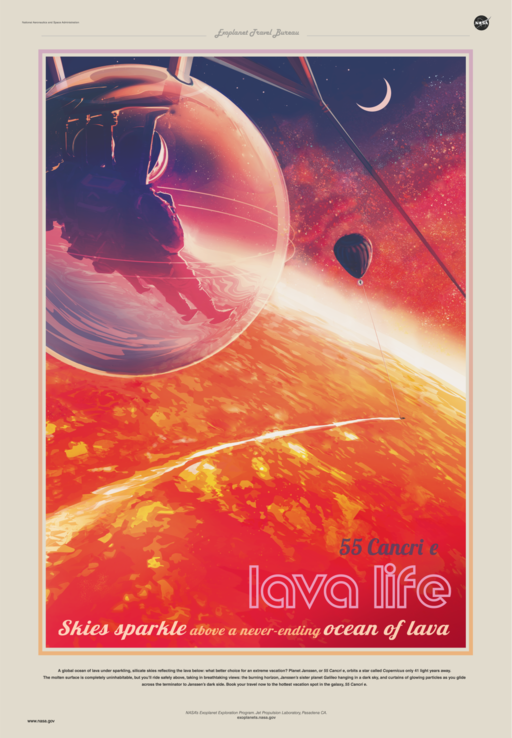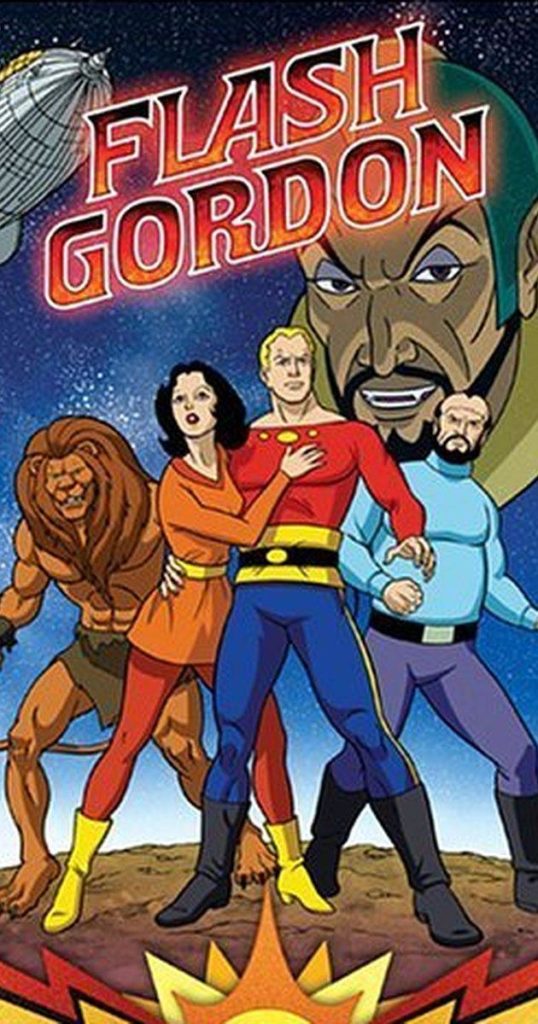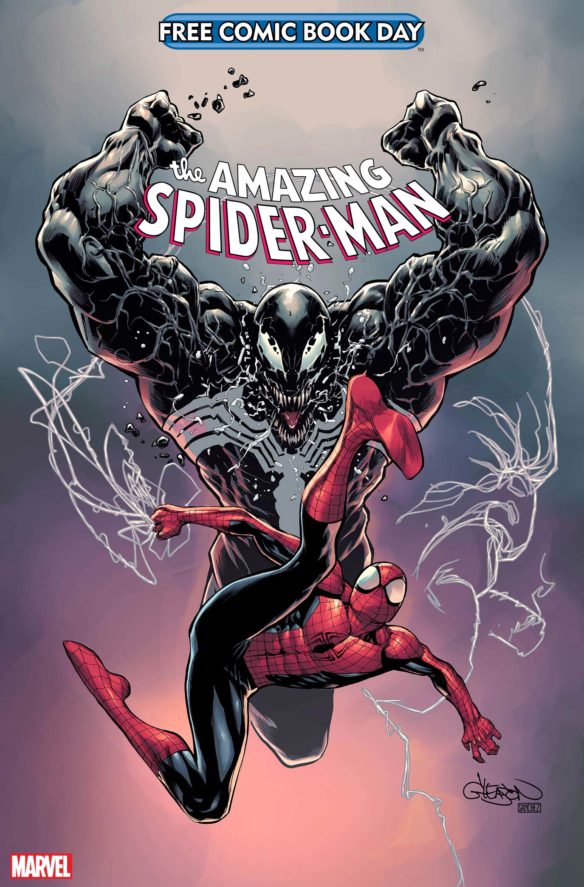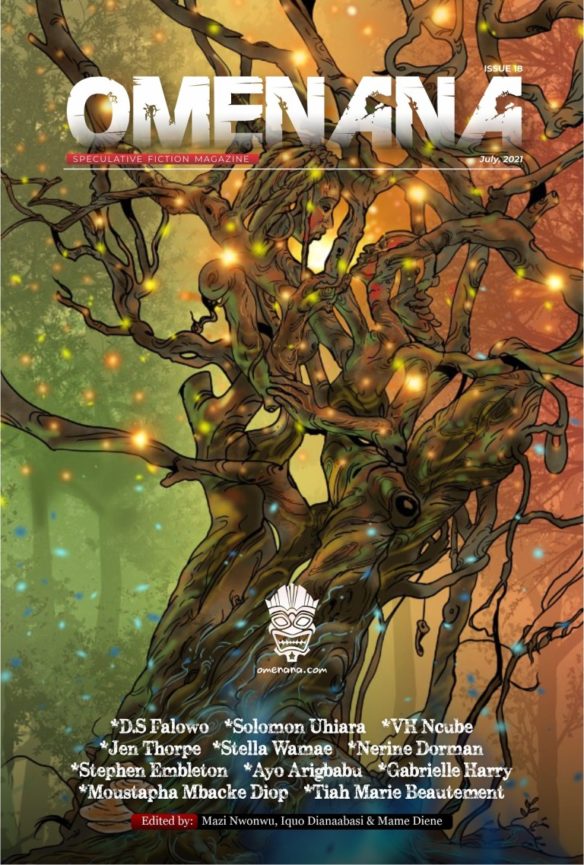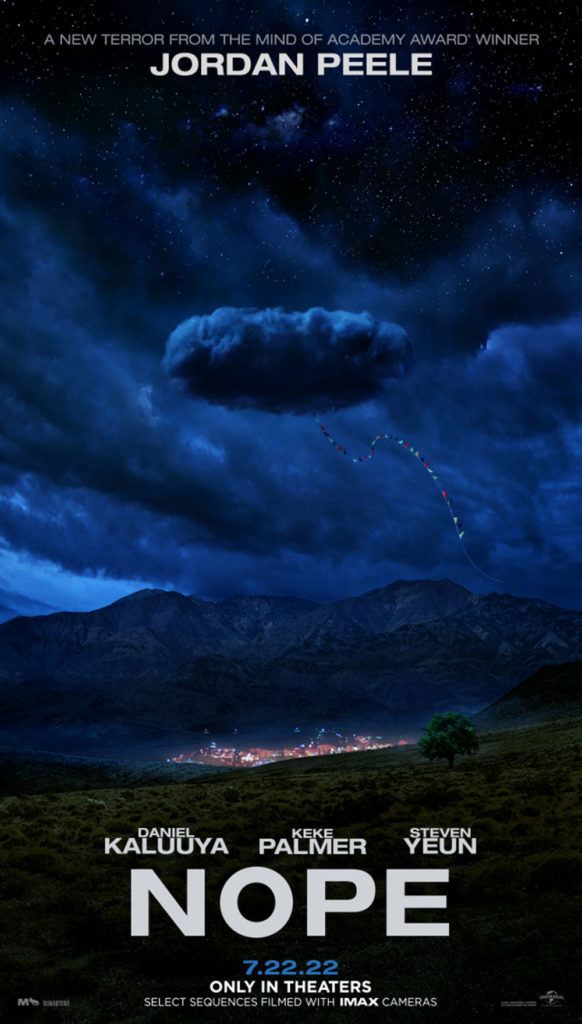(1) COSTUME-CON 43 CANCELED. Costume-Con 43 chair Henry Osier announced on Facebook today that the 2025 convention has been canceled reports Eric Hildeman of Starship Fonzie. The event was to have been held in Milwaukee this April.
Due to lack of pre-convention funds Costume-Con 43 has been canceled.
We regret having to make this decision. We wanted to create a truly unique and memorable convention for everyone and with insufficient funds this will not be possible. We had hoped to help educate costumers of all experience levels and backgrounds, as well as help people connect with other people interested in costuming from across the continent.
We are informing you at this time so that you may cancel your hotel reservations and travel plans.
If you have already paid for a membership/ticket you will be reimbursed….
(2) THE CLOCK OF THE LONG NOW. “It’s been an idea for over three decades. How did the clock that will run for 10,000 years become a reality?” Alec Nevala-Lee looks for the answer in “Chimes at Midnight” at Asterisk. The clock, designed to keep accurate time without human intervention for 10,000 years, is currently nearing completion on Jeff Bezos’s property in Texas.
…[Danny Hillis] had been dreaming about the clock for years, but he first set it down in detail in an essay — later published in Wired — dated February 15, 1995. Noting that society had trouble picturing the far future, he proposed a symbolic object to encourage long-term thinking: “I want to build a clock that ticks once a year. The century hand advances once every one hundred years, and the cuckoo comes out on the millennium.” It would keep accurate time for ten millennia, or roughly as long as human civilization had already existed. The musician Brian Eno, who later developed the chimes, named it the Clock of the Long Now.
Hillis initially explored the idea in an unlikely setting. He joined a Disney fellowship program, created expressly for him, as a vice president of research and development, although what he really wanted was to work on his clock. The Imagineers made their machine shops and staff available at cost, as long as the company retained the right to build a clock of its own, and he spoke long afterward as though he were designing a theme park attraction: “Time is a ride, and you are on it.”
Independently of Disney, he built two prototypes of the clock, but his efforts to invent a corresponding narrative — or myth — sometimes led to confusion. “A lot of people who hear about the clocks think it is just a story,” Hillis wrote earlier this year. “They are surprised to find out there are actual clocks.” In his Wired essay, he shared a provocative suggestion from the magician Teller: “The important thing is to make a very convincing documentary about building the clock and hiding it. Don’t actually build one. That would spoil the myth if it was ever found.”…
(3) LUMIÈRES AWARDS. “’Flow’ Wins Animation Award at Lumières”. Animation Magazine also reports the non-genre film Emilia Pérez won the most awards — five, including Best Film and Best Director.
One of this year’s awards season frontrunner, Gints Zilbalodis’ indie animated feature Flow has captured another prize. The critically acclaimed Latvian contender has been awarded Best Animated Feature at the 30th Lumières.
The Lumières are considered France’s version of the Golden Globes, as the winners are judged by members of the international press based in the country. This year, representatives of 38 countries voted on the category winners, which were announced in Paris on Monday.
Flow was nominated alongside Into the Wonderwoods (directed by Vincent Parannaud and Alexis Ducord); The Most Precious of Cargoes (Michel Hazanavicius); Maya, Give Me a Title (Michel Gondry); and Savages (Claude Barras)….
(4) BOOK APP’S BIGOTED MESSAGES. The New York Times reports “Fable, a Book App, Makes Changes After Offensive A.I. Messages” – you can just imagine what that program was trained on.
…In an Instagram post this week, Chris Gallello, the head of product at Fable, addressed the problem of A.I.-generated summaries on the app, saying that Fable began receiving complaints about “very bigoted racist language, and that was shocking to us.”
He gave no examples, but he was apparently referring to at least one Fable reader’s summary posted as a screenshot on Threads, which rounded up the book choices the reader, Tiana Trammell, had made, saying: “Your journey dives deep into the heart of Black narratives and transformative tales, leaving mainstream stories gasping for air. Don’t forget to surface for the occasional white author, okay?”
Fable replied in a comment under the post, saying that a team would work to resolve the problem. In his longer statement on Instagram, Mr. Gallello said that the company would introduce safeguards. These included disclosures that summaries were generated by artificial intelligence, the ability to opt out of them and a thumbs-down button that would alert the app to a potential problem.
Ms. Trammell, who lives in Detroit, downloaded Fable in October to track her reading. Around Christmas, she had read books that prompted summaries related to the holiday. But just before the new year, she finished three books by Black authors.
On Dec. 29, when Ms. Trammell saw her Fable summary, she was stunned. “I thought: ‘This cannot be what I am seeing. I am clearly missing something here,’” she said in an interview on Friday. She shared the summary with fellow book club members and on Fable, where others shared offensive summaries that they, too, had received or seen.
One person who read books about people with disabilities was told her choices “could earn an eye-roll from a sloth.” Another said a reader’s books were “making me wonder if you’re ever in the mood for a straight, cis white man’s perspective.”…
(5) COVER NEWS. DAW has shared the new US cover for John Wiswell’s Wearing the Lion, which will be released June 17.

Wiswell brings a humanizing, redemptive touch to the story of Heracles and his complicated relationship with the goddess Hera saying, “Wearing the Lion is an epic fantasy about the things that make us feel monstrous, and about how facing monsters can make us feel whole. It’s about traditional family, found family, and growing when people say there’s nothing left for you.”
(6) STATUS OF BUTLER GRAVE. Gizmodo reassures readers “Beloved Sci-Fi Author Octavia Butler’s Gravesite Survived Los Angeles Fire”.
…The Afrofuturist’s grave rests in Altadena, which was hit hard amid the recent fires that left thousands of Californians without their homes. But her burial site survived: the AP shared an image of the location and reported that it received “minimal damage,” citing a statement on the Altadena Mountain View cemetery’s web site. Butler passed in 2006 and her footstone reads “All that you touch, you change. All that you change, changes you,” a quote from Parable of the Sower.…
However, what the Associated Press specifically reported is:
…A spokesperson at the Mountain View cemetery confirmed the accuracy of the website’s announcement to The Associated Press, but would not comment on the status of individual markers….
(7) JULES FEIFFER (1929-2025). Pulitzer Prize-winning cartoonist Jules Feiffer died January 17. NPR pays tribute: “Jules Feiffer, cartoonist and playwright, dies at 95”.
… It wasn’t just on the page that he hurled himself so intrepidly into the unknown. In life, too, he continually aimed for unseen horizons. When he died Jan. 17 of congestive heart failure at his home in Richfield Springs, N.Y., he left an abundant legacy across a range of artistic media. The history of graphic art, literature, film and the theater bear the imprint of his ever-distinctive, ever-wayward pen….
…. Straight out of high school, he looked up Will Eisner in the phone book and buttonholed the legendary comics mastermind in his downtown office. Eisner “couldn’t have been more pleasant until he looked at my work, and then he told me that the work was s***,” Feiffer told the Voice in 2018. Even so, Eisner allowed the boy to contribute bits and pieces to the studio’s comics. Feiffer filled in black-ink areas and ruled panel borders. More importantly, he talked to Eisner about the form. Eventually Feiffer graduated to writing stories for The Spirit, continuing until he was drafted in 1951. He served in the U.S. Army Signal Corps until 1953….
…The assassination of John F. Kennedy prompted him to pen his first full-fledged play, 1967’s Little Murders. (Though its Broadway debut was a flop, an Off-Broadway production won an Obie award in 1969.)…Perhaps most memorably, he penned the screenplay for 1971’s Carnal Knowledge, directed by Mike Nichols…
…For the younger set he was the magical artist behind 1961’s The Phantom Tollbooth….
(8) TODAY’S BIRTHDAY.
[Written by Paul Weimer.]
January 21, 1923 — Judith Merril. (Died 1997.)
By Paul Weimer: Judith Merril, to me, has always been a science fiction editor, writer, and activist whose work, and life, has invariably and inexorably been tied to her fearlessly progressive politics.
I came across various stories of Merril in my early reading of a lot of the early stories of the field in the 1980s. “That Only a Mother”. That story, with a mother with a mutant baby but unable to or unwilling to see that her baby IS in fact, severely deformed. Even from the beginning here, Merril showed her interest in the psychology and personality of her characters as the main drivers of her plots. And yeah, the ending of that story left a mark.
Or perhaps “The Tomorrow People”, with its deep psychological look at a group of people in space after a disastrous trip to Mars. In a way, that story always felt like to me as a forerunner to Frederik Pohl’s Gateway (but not its sequels!). Both could be considered forerunners of the New Wave movement.
Beyond her writing, she’s probably known even better for being an editor, having edited volumes of Canadian SF (the Tesseract series) as well as many Best of Science Fiction volumes. Her point of view and her editorial choices and viewpoint helped move science fiction away from the pulp era and into the aforementioned New Wave movement. Merill is one of the people who helped prove that science fiction (or at least a significant segment of it) could be a full-on high literary genre.
But it is her politics that I know her work best. She was a signatory to the infamous anti-Vietnam War ad that ran in Galaxy. Not long after that ad ran, she moved to Canada and became very active in the Canadian SF movement, from hosting episodes of Doctor Who, to endowing science fiction collections and the aforementioned editing of Canadian SF. She never stopped speaking her mind and heart about politics, especially her views on war and the military and eventually became a Canadian citizen.
A veritable force of nature in the science fiction field.

(9) TOMORROW’S BREAKFAST.
[Written by Cat Eldridge.]
Rex Stout’s Omelet
Rex Stout’s recipe for his perfect omelet in And Be a Villain (British title, More Deaths Than One), the Nero Wolfe novel that was first published by the Viking Press here in 1948.
It’s also in The Nero Wolfe Cookbook which was published by Viking Press in 1973 where the Viking editors then credit it to Wolfe a quarter of a century later. Why it’s not credited in the actual novel is a bit odd.
If you decide to purchase this cookbook, do not buy the 1981 paperback as it has but a sampling of the 1973 recipes. Boo, hiss! The problem is that the first printing not unexpectedly has become quite pricey running as well over a hundred and fifty dollars!
And now, here’s Stout’s perfect omelet recipe.
It is better to make two small omelets than a large one. Beat four eggs in a bowl, adding two Tbsps. of milk or cream if you wish; I don’t. Season to taste with salt and pepper. Heat one scant Tbsp. butter in a skillet over a hot fire. When the butter is hot but before it smokes, add the eggs all at once. Quickly, with a fork, pull the edges of the egg mass toward the center as they thicken. The liquid part will immediately fill the vacant spaces. Repeat until there is no more liquid but thei eggs are still very soft. Gently press the handle of the skillet downward and let the omelet slide toward it. When 1/3 of the omelet has slid up the edge of the pan, fold it toward the center with a spatula. Raise the handle to slide the omelet in the opposite direction, and when 1/3 is up the far edge hold a dish (heated) under it. As the rim of the omelet touches the dish, raise the handle until the skillet is upside down. The result should be an oval-shaped light-brown omelet.

(10) MEMORY LANE.
[Written by Cat Eldridge.]
Charlie Chan in Paris (1935)

Ninety years ago, Charlie Chan in Paris, the seventh in that series, premiered. It was directed by Lewis Seiler as written by the trio of Earl Derr Biggers, Philip MacDonald and Stuart Anthony. All the films featured Warner Oland, a Swedish-American actor who had also played Fu Manchu. Oland would play this role sixteen times.
Honolulu Police detective Lieutenant Chan was created by Biggers who wrote six novels in which he appears. The House Without a Key is the first one. It’s available from the usual suspects for ninety-nine cents.
Biggers loosely based Chan on Hawaiian detective Chang Apana and was intended to be the opposite of Fu Manchu. The real detective actually solved very few murder cases as he worked mostly on opium cases, opium being a major problem then.
Over the years eleven different actors would portray him including Peter Ustinov and Ross Martin.
This film was considered lost for decades until a print was discovered in Czechoslovakia with a collector in the seventies. After a number of showings in various revival cinemas throughout the States, it was released on DVD as part of a collection. All of the films are in the public domain so you can watch it here.
(11) COMICS SECTION.
- Curses looks at reader approval.
- Dinosaur Comics explains flashbacks.
- Pardon My Planet has a horrible explanation for a Star Trek icon.
- Speed Bump – is this speed reading or a book critic at work?
- Strange Brew knows you can talk to the animals but they won’t all listen.
(12) LEGEND OR MYTH – YOU DECIDE. “30 years later, Fallout creator Tim Cain is searching for a legendary D&D player who cheesed an entire competitive dungeon with a lightning-fast Monk build” reports GamesRadar+.
… In a recent YouTube video, Cain explores the legend of the ‘1 million XP dungeon’, a first-edition D&D competition he says he heard about in 1993 at a gaming convention in California. In the competition, players had to run through a complex, multi-layered dungeon and become the first to reach the goal at its end. To do so, however, they were each given one million XP with which to craft a character.
XP could be used to level up, or it could be converted into gold coins at a ratio of one XP to one gold, with that gold used to buy magical items based on their assigned value in the rules. Cain explains that that meant some players would max out on levels, while others might rely on a bevy of magical items to get them through the dungeon. Most sat somewhere between those extremes, but the eventual winner was a player who pushed the rules to their limit.
The prize was claimed, Cain believes, by a level 11 human Monk. A class often defined by unarmed attacks and no armor, Monks might have seemed a risky pick, but Cain explains how this character had a strong armor class, several useful resistances and immunities, and the ability to shrug off damage on most saving throws. On top of that, at level 11, Monks have a move speed of 25 – double the base speed of pretty much any other character, and faster than both horses and players under the effect of haste spells. Clearly, the strategy was to go very fast, but the Monk faced one major hindrance – their class was limited to just three magical items. With 700,000XP given over to leveling, they risked not being able to get the most out of their build.
The items they opted for included a Cloak of Protection +5 to enhance their already strong armor class and give a +5 to their already-enhanced saving throws, which they boosted even further with a Scarab of Protection. The real cherry on top, however, was the Ring of Air Elemental Command – as well as some extra bonuses like the Gust of Wind spell, that ring offered unlimited flight and visibility.
Players entering the competition were matched up with a DM in groups of three to five, with the first person to reach the final goal out of all the entrants winning the contest. To hear Cain tell it, the Monk in question lined up with their fellow players, went invisible, and took off running. Moving twice as fast as everyone else, able to fly over any traps and remain invisible to any enemies, it sounds as though there was no contest whatsoever. The Monk reached their goal on the final floor of the dungeon before most other players had even made it off the first floor – several players were yet to even get into the castle….
(13) PLONK YOUR MAGIC TWANGER. SF Gate visits “The Bay Area shop that sends rent checks to George Lucas”.
Beautifully restored banjos and 18th-century violins line the walls of Amazing Grace, a San Anselmo music store that has faced more threats than Luke Skywalker in “The Empire Strikes Back.” In fact, the shop wouldn’t exist if George Lucas, the “Star Wars” franchise creator and longtime San Anselmo resident, hadn’t stepped in to rescue it in 2004.
There are other Lucas connections too. One of Lucas’ children took guitar lessons at the shop. And many employees at Lucasfilm’s Industrial Light & Magic, the Marin County special-effects company founded by Lucas, have stopped by the store for decades to buy instruments for movie props, repair their own gear or just to chat with the mom-and-pop owners who have run Amazing Grace since 1983.
Amazing Grace has been at the heart of the thriving Marin music scene throughout its incarnations in three buildings and with three pairs of owners (all local musician couples) since its founding in 1970. But by 2004, during every Marin storm, rainwater leaked through the roof and a back door of the dilapidated 1936 building, a former commuter train depot near the San Rafael-San Anselmo border.
“We thought we’d have to jump ship and start repairing instruments in our garage,” says shop co-owner, master luthier (string instrument-maker) and old-time string band musician John Pedersen. “But then George’s property manager convinced him to buy the land and build a new and bigger shop. I’d met George a few times when my band played at his Fourth of July parties at the [Lucasfilm Skywalker] ranch, and I understand that he liked the idea of supporting a mom-and-pop business.”
Lucas has also built a park in downtown San Anselmo, where Yoda and Indiana Jones statues are a hit, and rescued at least one other local business. “We see him around town, but we don’t bother him,” Pedersen says. “We just send him a rent check each month.”…
(14) GIGO. “AI-Generated Junk Science Is a Big Problem on Google Scholar, Research Suggests” – Gizmodo has the story.
AI-generated scientific research is polluting the online academic information ecosystem, according to a worrying report published in the Harvard Kennedy School’s Misinformation Review.
A team of researchers investigated the prevalence of research articles with evidence of artificially generated text on Google Scholar, an academic search engine that makes it easy to search for research published historically in a wealth of academic journals.
The team specifically interrogated misuse of generative pre-trained transformers (or GPTs), a type of large language model (LLM) that includes now-familiar software such as OpenAI’s ChatGPT. These models are able to rapidly interpret text inputs and rapidly generate responses, in the form of figures, images, and long lines of text.
In the research, the team analyzed a sample of scientific papers found on Google Scholar with signs of GPT-use. The selected papers contained one or two common phrases that conversational agents (commonly, chatbots) undergirded by LLMs use. The researchers then investigated the extent to which those questionable papers were distributed and hosted across the internet.
“The risk of what we call ‘evidence hacking’ increases significantly when AI-generated research is spread in search engines,” said Björn Ekström, a researcher at the Swedish School of Library and Information Science, and co-author of the paper, in a University of Borås release. “This can have tangible consequences as incorrect results can seep further into society and possibly also into more and more domains.”
The way Google Scholar pulls research from around the internet, according to the recent team, does not screen out papers whose authors lack a scientific affiliation or peer-review; the engine will pull academic bycatch—student papers, reports, preprints, and more—along with the research that has passed a higher bar of scrutiny.
The team found that two-thirds of the papers they studied were at least in part produced through undisclosed use of GPTs. Of the GPT-fabricated papers, the researchers found that 14.5% pertained to health, 19.5% pertained to the environment, and 23% pertained to computing….
(15) YOUTHFUL ZITS OF THE UNIVERSE. “Webb’s Stunning Discovery: Could These Mysterious ‘Little Red Dots’ Be the Universe’s Earliest Black Holes?” asks Sci Tech Daily.
Shortly after NASA’s James Webb Space Telescope began its science operations, astronomers encountered an unexpected discovery in the data: small, red objects scattered across the distant, early universe. These intriguing phenomena, now referred to as “little red dots” (LRDs), remain poorly understood, raising fresh questions and inspiring new theories about the processes shaping the universe’s infancy.
By analyzing publicly available Webb data, a team of astronomers recently compiled one of the largest samples of LRDs to date. Nearly all of these objects are believed to have existed within the first 1.5 billion years after the Big Bang. The researchers concluded that a significant portion of the LRDs are likely galaxies hosting growing black holes at their centers….
(16) BAKER CAKE. Tom Baker celebrated his 91st birthday yesterday and a photo of him posing with his cake has been shared online.


[Thanks to Teddy Harvia, Mike Kennedy, Andrew Porter, Alec Nevala-Lee, Eric Hildeman, John King Tarpinian, Chris Barkley, Cat Eldridge, SF Concatenation’s Jonathan Cowie, Steven French, and Kathy Sullivan for some of these stories. Title credit belongs to File 770 contributing editor of the day Brian Jones.]



















